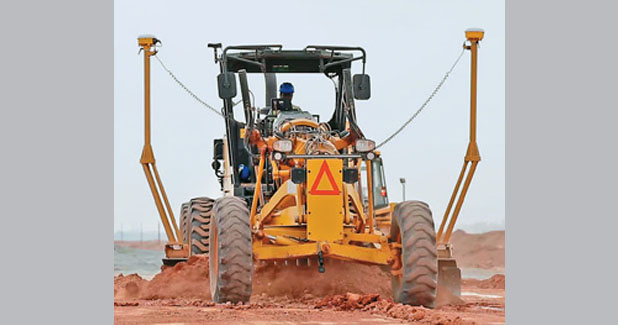
Turn to Digital and Automation
Digitalisation, automation, analytics, predictive maintenance, etc are the present day solutions to make the fleet agile and sweat. <span style="font-weight: bold;">SP Rajan,</span> writes on adopting new technologies and practices for optimum equipment utilisation at project sites. <p></p><p> Shrinking contract timelines, ever-increasing mechanisation, stringent quality norms, need for "competitive productivity" and sustainability challenges have been driving the manufacturing and optimal utilisation of equipment in projects like never before. Organisations are realising the importance of consistent equipment performance as an essential enabler for project and business successes. </p><p> Construction projects are heavily equipment intensive. Large-scale construction operations need consistently performing equipment fleet capable of delivering the required throughput.</p><p> The art of optimal utilisation lies in looking at long term. Once a sustainable business line is identified, core equipment with longer lifetime is selected with adequate flexibility for upgradation. This begins with performance and lifecycle-based selection. An essential ingredient to realising an equipment's full design-life and optimal performance is skilled and regulated operation. Skilled operator knows an equipment's highs and lows. </p><p> A typical challenge faced by contractors today is lack of skilled manpower to operate equipment. It is an irony to have refined equipment operated by unskilled workforce. Similarly, accurately reading the pulse of an equipment and designing the maintenance paradigms supervised by deft hands is becoming increasingly challenging. An unsaid challenge is, to bring out the best from the human-equipment combination.</p><p> Another important criterion for equipment productivity is understanding the nature and complexities of a project and the total fleet deployed for a task. A motor grader for example will have different productivities when employed with a dozer on a long highway stretch versus a city road. </p><p> Balancing equipment capacities corresponding to asking rates, along with the awareness of working space availability is a delicate balance to achieve. An integrated perspective always helps in a win-win situation. </p><p> The project challenges such as statutory approvals, utility shifting, land availability and other uncontrollable variables tend to question the tender estimations shrinking the already shrunk project cycle, leaving a narrow window for the machines to perform exceeding the expectations.</p><p> In a construction chain, the utilisation is improved based on the preceding and parallel activities. An asphalt paver is as efficient as the preceding activity, i.e, preparation of the sub-base and the production equipment is as efficient as the conveying and laying equipment in the chain.</p><p> Communication breakdown in remote construction projects also leads to inefficiency. Delayed fuel distribution, service and restoration support can well make a dent in the daily schedule. So is the case with the haulage dump trucks that carry asphalt mix to paving locations. Tracking these units is a nightmare on a stretch of 100 km, a normal road project in India.</p><p> With the technology taking over and the arrival of industry 4.0, the scope of optimisation has opened up for the construction industry and its equipment.</p><p> An automated 3D-enabled grader can outperform normal one by miles and so can a 3D-enabled excavator for a quicker and accurate work. Digital solutions bring on your desktop such data that were not available in the past.</p><p> Digitalisation, automation, analytics, predictive maintenance, etc are the present day solutions to make the fleet agile and sweat. Our ability to adopt these technologies and insights is what brings out the best from such tools.</p><p> The author SP Rajan is Head-Plant and Machinery (Roads, Runways & Elevated Corridors), L&T Construction. </p><p></p>


 +91-22-24193000
+91-22-24193000 Subscriber@ASAPPinfoGlobal.com
Subscriber@ASAPPinfoGlobal.com